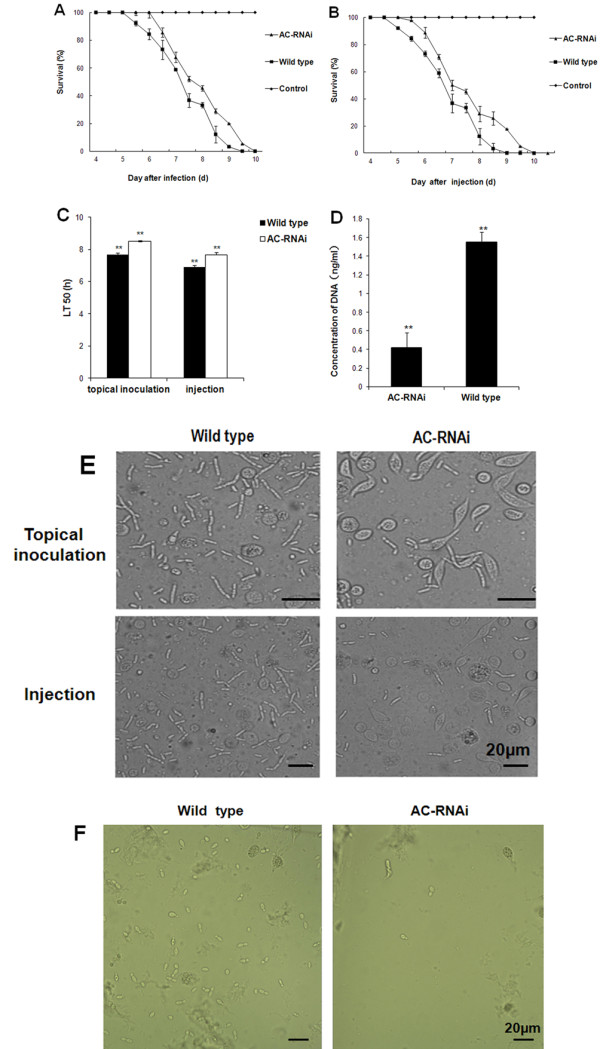Figure 6.

The virulence and fungal growth in the haemolymph of locust in vivo and in vitro .A. Topical application with 5 μL suspensions of 1 × 107 conidia/mL of wild type and RNAi mutant (control insects were inoculated with 5 μL cottonseed oil). B. Survival of the locusts by injection with 5 μL suspensions of 2 × 106 conidia/mL (control insects were injected with 5 μL sterile water). C. Lethal time for 50% mortality (LT50) values of Locusta migratoria treated with the wild type or AC-RNAi mutant. Error bars denote standard deviations obtained from five trials. D. DNA concentration of AC-RNAi and wild type in the hemolymph of locusts 48 h after injection. E. Photomicroscopy of the development of conidiation patterns of M. acridum in the hemolymph of locusts. After 4 d of infection on the pronotum, the conidiation of the RNAi mutant strain grew slower than the wild type strain. The conidiation of the RNAi mutant strain grew also slower than the wild type strain 3 d after injection into abdominal segments. F. Photomicroscopy of the development of conidiation patterns of M. acridum in the hemolymph of locusts in vitro. After they were cultured for 24 h, the conidiation of the RNAi mutant strain grew slower than the wild type strain. Scale bar: 20 μm. Error bars are standard deviations of five trials. *: significant difference, p <0.05, **: significant difference, p <0.01.
